FEATURE Cameroon's mangroves could vanish without action
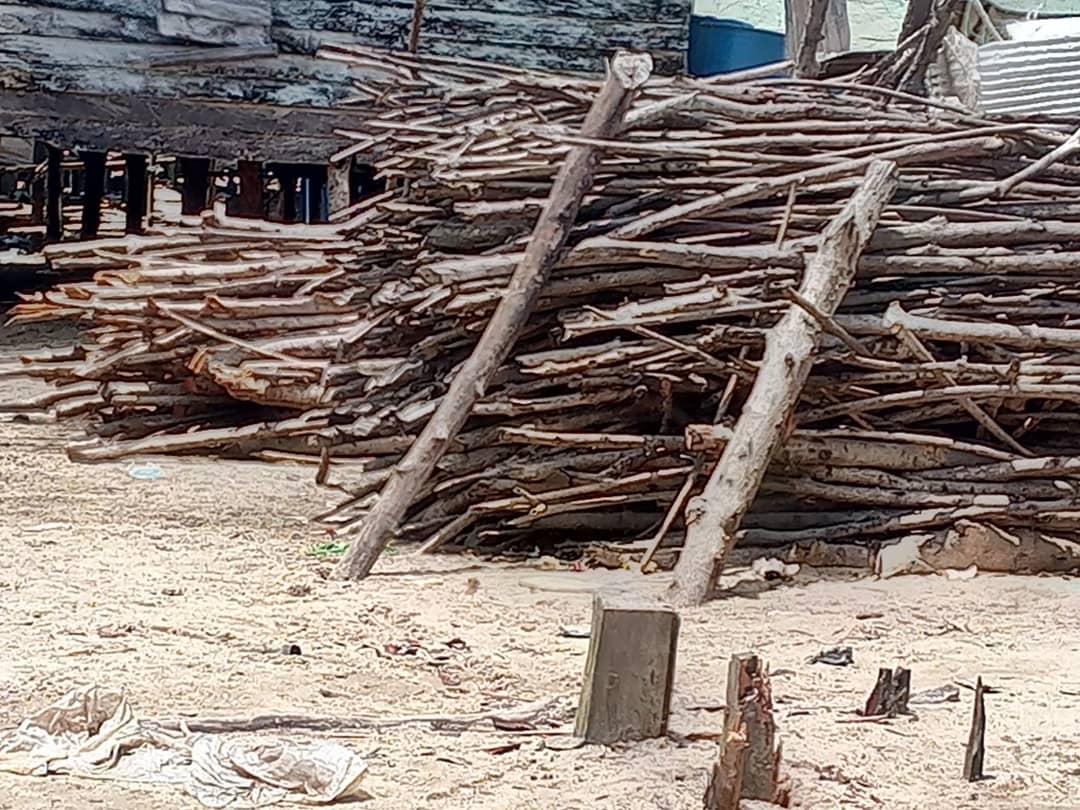
CAMEROON – The state of Cameroon’s mangrove forests is deplorable due to numerous destructive practices, according to local experts. In a study entitled Threats to Mangroves in Cameroon, Ulrich Waffo, a Cameroonian academic, detailed the importance of mangroves for the country. According to Waffo, 80% of the fish species caught at sea depend on mangroves. The wood found there is used to build canoes and make fire to smoke fish to be preserved. Rattans from the mangroves are also used to make furniture and many art objects. Mangrove forests are also rich in oil and gas resources and also offer protection against swells and winds. They are also an important source of income for the local population and a sacred place for some traditionalists. But these multiple benefits are threatened on a daily basis As of two years ago, the mangrove forests were 75% degraded. Today, this figure is much higher and the situation is worsening, Langmi Moses, president of a mangrove protection association, told Anadolu Agency. "By cutting down mangrove trees that have been planted in less than three years and with the government's permission, operators are destroying the mangroves and preventing their regeneration. The Ministry of Forests and Wildlife sells the wood from these mangroves for less than one dollar. We can't reforest all the time when our work is destroyed after two years," he said. "In 2011, a reforestation operation was launched by the government. However, it was led by men in jackets and ties who do not know the reality of this ecosystem. I have seen ministers ordering the reforestation of mangroves in inappropriate areas out of ignorance.” READ MORE GLOBAL Report claims shrimp farmers face financial risk from mangrove loss

GLOBAL – The world's shrimp farmers face increasing financial risks from factors such as mangrove deforestation, the increasing intensification of production and a global output oversupply, a new report charges. According to the report from the advocacy group Planet Tracker, some 30% of "mangrove deforestation and coastal land-use change" across Southeast Asia is linked to shrimp farming. This poses risks, as, according to the group: "Incorporating land-use change into shrimp life cycle assessments places shrimp ahead of beef for GhG [greenhouse gas] emissions on a per kilogram of production basis," it claimed. Planet Tracker is advocating for major publicly traded shrimp farmers to be "more transparent" in about the impact that mangrove destruction has in their financial statements. READ MORE Editor's Note: Though global warming may provide more area for mangrove expansion, it should not be forgotten that rising sea levels my actually wipe out existing mangrove areas more rapidly than they can spread, and some species of mangroves will vanish because of this rise in sea level. Also, as evidenced in northern Australia, a 10,000 ha mangrove die-off which purportedly was caused by rising temperatures, increased drought and rise in salinity of sea water did not bode well for the mangroves.
Global warming will be a boon to mangrove forests

GLOBAL – Climate change is set to wreak havoc with natural ecosystems, but not all species of flora and fauna will suffer setbacks. Some species that thrive in warmer temperatures are bound to benefit from a warming climate. These species include mangroves, which flourish at tropical and subtropical latitudes near the equator. Species of mangrove trees grow in relatively inhospitable areas whose conditions most other trees are ill equipped to tolerate. Mangroves have adapted to waterlogged and anoxic soil, including slow-moving and brackish water. What many mangrove trees cannot stand, however, is freezing temperatures since they prefer warmth. As a result, global warming will be a boon to mangrove trees and aid their spread. Instead of being limited to their current homes in subtropical and tropical climates, mangroves will take advantage of warming temperatures and expand into temperate climate. A study published in the journal Global Change Biology reports that mangrove trees are now found at higher latitudes such as the Atlantic coast of the United States. READ MORE AFRICA One mangrove, a thousand hopes

NIGERIA – Mangrove ecosystems support the planet and people in unique ways. Many Nigerians living near the river in Cross River State know that. “Mangroves provide the best firewood, as people who roast fish know,” says Idem Williamson, a villager living in Esierebom community in Cross River State. “But by cutting the wood, the mangroves disappeared. And without the mangroves, water floods our houses.” The need to restore mangroves inspired Williamson to get involved for a REDD+ project that saw the whole community come together to plant more than 10,000 seedlings. “The positive effect is that it controls the level of water coming in from the rivers and allows us to use the creeks for fishing. And we can pick the unwanted branches of the mangroves in specific areas for firewood.” READ MORE The people planting mangroves to revive a Gambian community

GAMBIA – Severe drought has been affecting the town of Sankandi in The Gambia for the last four decades, and it has taken its toll on the environment. Mangrove forests that grew along the river died, which had repercussions on the local community, who use mangroves as a main resource. Our Observer wanted to work out how to restore the mangrove forests and help the struggling local population. Ansumana Darboe co-founded the Sankandi Youth Development Organisation in 2005 to promote sustainable development in the region and empower local rural communities. Since 2014, the organisation has been focusing on restoring the once-lush wetlands near the river, which Darboe hopes will boost the local ecosystem and so help the community by repopulating the river with fish. The presence of mangroves encourages fish to breed, so mangrove forests are often linked with a high fish population. READ MORE Confronting the challenges of climate change on Africa’s coastal areas

AFRICAN CONTINENT – Climate change will undoubtedly present one of the most significant risks to Africa’s sustainable development objectives over the next decade, and nowhere is the threat more imminent than on its coastlines. Indeed, recent estimates show that sea levels could rise 100 cm by 2100, further compounding the many hazards threatening the region. Mangroves offer an effective buffer against coastal vulnerability to storm surges by obstructing the flow of water and hence attenuating inundation. Therefore, they can play the same role as infrastructure designed to protect coastal areas from such extreme events as storm surges and cyclones. Notably, mangrove rehabilitation projects can be two to six times cheaper than other protection infrastructure. However, mangroves have varying tolerance to salinity, depending on the species. Flooding, deforestation, and increases in ocean surface temperature that raise the salinity of inland water are increasingly putting mangroves in jeopardy and further weakening the already fragile adaptive capacity of African coastlines. READ MORE Living Planet: How Kenya saved its mangrove forest
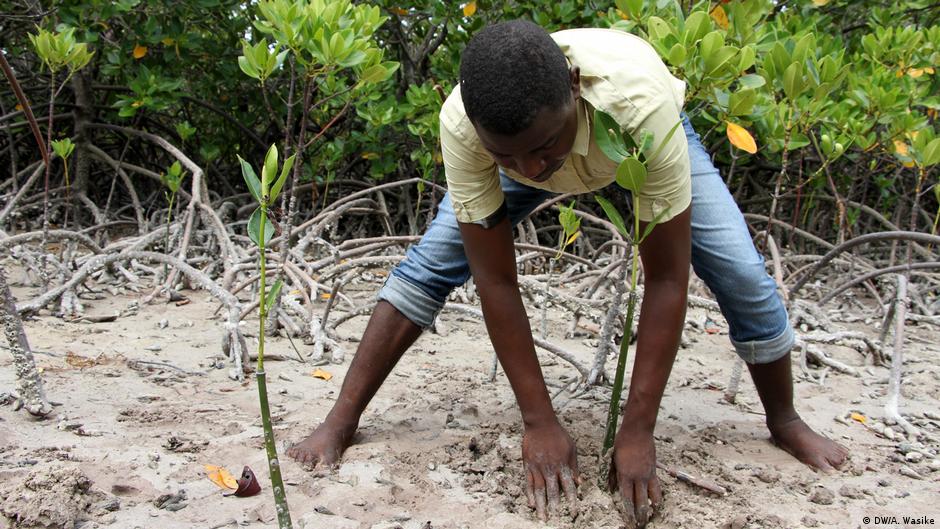
KENYA – In East Africa, terrestrial and mangrove forests used to run along the coast from Somalia to Mozambique, but climate change and human interference have decimated the Somali and Mozambican sections over the years. But in between, in Kenya, the forest is flourishing. There, locals are helping to support their communities by planting mangroves, which absorb carbon dioxide. LISTEN TO AUDIO Carbon credits key to keeping Indonesian shrimp out of the mangroves

INDONESIA – A team of analysts from the US-based Boston Consulting Group (BCG) has completed an extensive study of the economic benefits in mangrove preservation as part of its recent report on the current state of shrimp farming in major Southeast Asian producing nations.Although their research shows mangrove deforestation in Indonesia has slowed or even reversed in recent years — the team estimates that mangrove area increased overall by 6% from 2014 through to 2018 — it remains a significant issue in many parts of the country. "Historically, aquaculture has been responsible for around 50% of mangrove deforestation in Indonesia, and in some regions, this destruction continues, mainly as a result of extensive P. monodon [black tiger] shrimp production," BCG writes. This is of particular concern, as BCG estimates that approximately 17% of the world's mangroves can be found in the country, or roughly 3 million hectares as of 2018. READ MORE AMERICAS America’s Shrimp Gluttony Is Bad for the Planet and Maybe Worse for Human Health
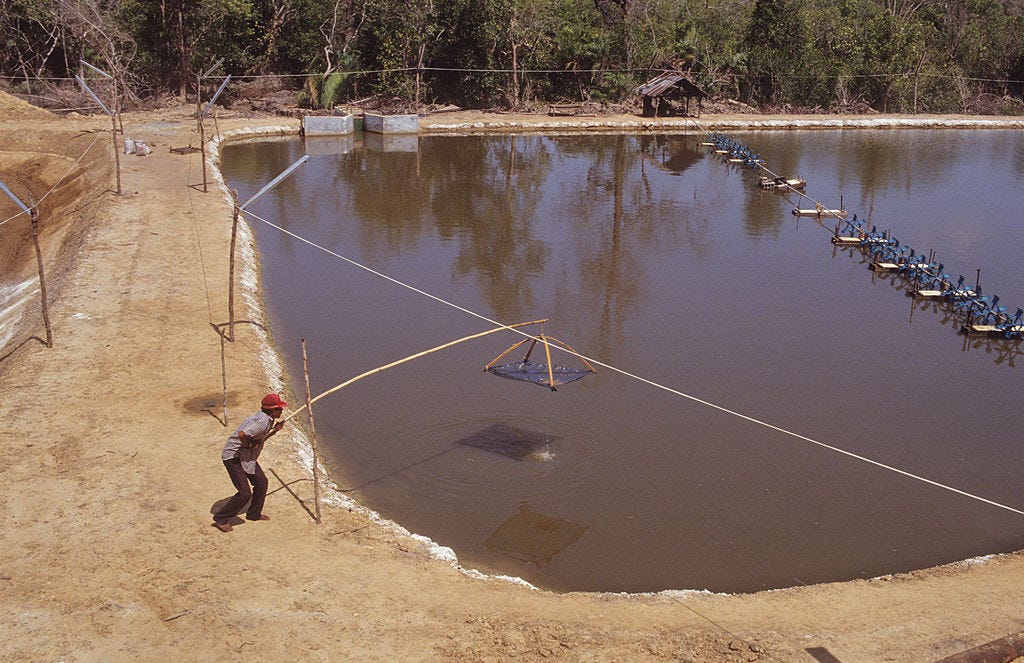
USA – Nearly all of the shrimp we eat — greater than 90 percent of it — is foreign. Even if you live in New Orleans or some other place on the ocean, at least 50 percent of the shrimp you’ll find in your local grocery store — and probably an even greater percentage of the stuff you’re served in restaurants — is imported. “We do have domestic shrimp production, but it’s not nearly enough to meet demand,” says Ryan Bigelow, Seafood Watch senior program manager at the nonprofit Monterey Bay Aquarium, one of the world’s leading ocean conservation organizations. While not all foreign shrimp producers are treating their stock with antibiotics, right now it’s almost impossible for U.S. importers to know whether the shrimp they’re bringing home and selling to domestic distributors have been raised with or without these drugs. “A lot of the shrimp farmers in Southeast Asia are very small-scale, and they’re selling their shrimp to someone who shows up at their town or village and buys up all the shrimp that’s available,” Bigelow says. There is no financial benefit for farmers who eschew antibiotics or other harmful chemical treatments; they’ll be paid the same as the farmers dumping drugs into their shrimp ponds. READ MORE Volunteers help replant mangroves

CAYMAN ISLANDS – A group of volunteers is helping to restore mangroves along the South Sound shoreline Cayman resident Chris Luijten’s newly established group, Cayman Mangrove Conservation which he started last month, already has 10 volunteers. Luijten said he is seeking advice from a lawyer on how to register the group a non-profit organisation. “In the meantime, we already have a website. We have started the project all alongside South Sound … up until Red Bay Dock,” he said. Last month, Luijten donated $75,000 to purchase an area of mangroves to help offset carbon dioxide emissions by Protect Our Future students’ travel to Spain last month for a United Nations climate change conference. He has set a 10-year timeline to restore mangrove species along the southern coastline. The plan includes replanting mangroves and protecting them from threats, he said. “The threats that are impacting mangroves are human activity, but it’s also sargassum [seaweed],” he said. “You can change the human aspect by educating people and creating new laws, but the combination of high tide and sargassum are going to kill what you’re doing. Sargassum management and mangrove restoration go hand in hand.” READ MORE Mangroves under threat from development, agrichemicals
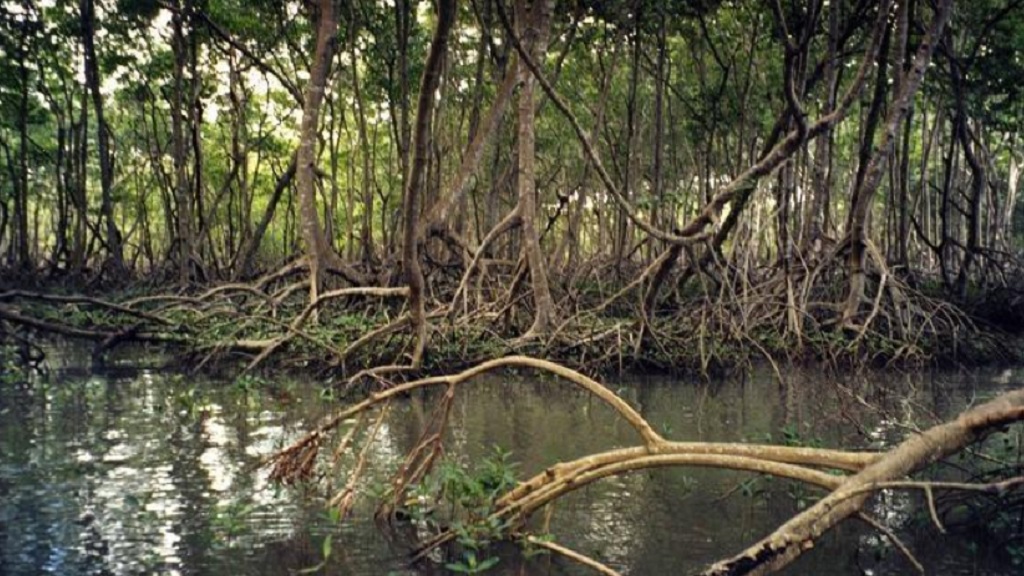
TRINIDAD AND TOBAGO – Mangroves have declined over the last seven years, due in part to development as well as the use of agrichemicals from local farmers, according to the Ministry of Planning and Development. In a statement issued earlier this month, the Ministry said it’s now taking action to raise awareness on the protection of mangroves, which are critical for protecting the country from coastal erosion. “Much of the mangrove forests in Trinidad and Tobago have been impacted by human activities, and are now projected to be negatively affected by sea-level rise especially where they are starved of sediment and/or constrained on the landward side by built development – a process known as coastal squeeze.” The Ministry said between 2007 to 2014, mangrove coverage has declined in Trinidad by approximately 3.3 percent or 10 square miles (252.4 hectares), while in Tobago it declined by 7.8 percent from 16.6 hectares in 2007 to 196.1 hectares in 2014. READ MORE ASIA Reckless Development Worsens Maldives’ Environmental Crisis
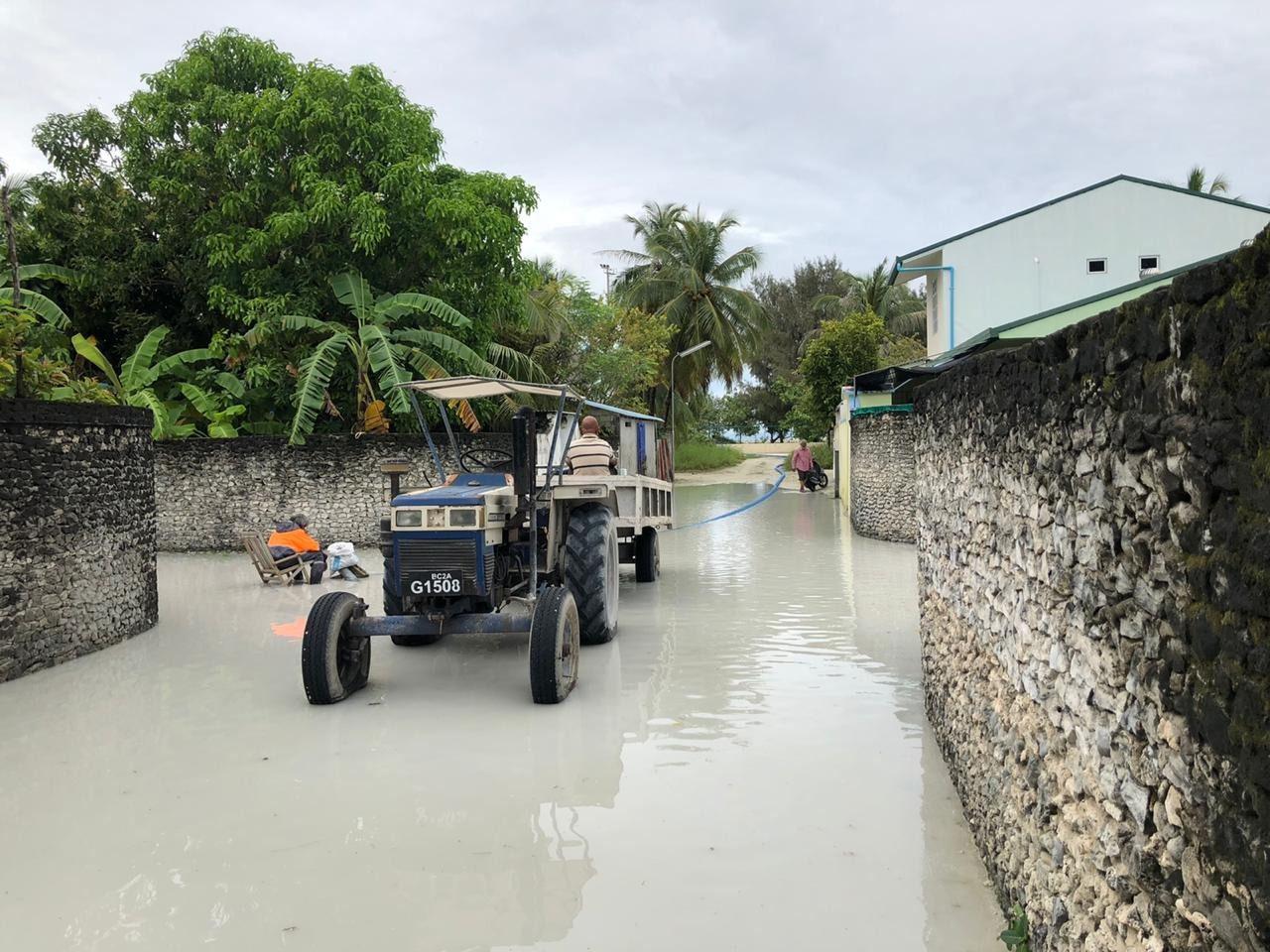
MALDIVES – To most of the world, the Maldives are a tempting tourist destination, with over 1,192 islands of coral reefs and pristine beaches. But the Maldivian government has long ignored its own environmental regulations and the needs of communities in developing these precarious, low-lying islands. Foreigners generally only see the luxury resorts, not the islands where most Maldivians live. During a torrential downpour this month while I was on Kulhudhufushi, the island flooded within hours. Residents rushed to bolster embankments with sandbags and dig channels to clear waterlogging. As the waters receded, residents told me that flooding now happens more frequently and affects more homes than anything like in previous years. In the past, mangroves provided a natural protection against flooding. Kulhudhufushi, they said, has grown more vulnerable since 70 percent of the island’s mangroves were bulldozed to make way for a new airport. Areas adjacent to the destroyed natural mangrove buffers were worst hit by the floods. READ MORE Pic story of grassroots mangrove protecting personnel in Hainan

CHINA – Chen Zhengping, a forest ranger in a city-level nature reserve in Danzhou City, inspects mangroves in the reserve in south China's Hainan Province, Dec. 9, 2019. Hainan, rich in mangrove resources, now has about 5,727 hectares of mangrove forests, most of which are distributed in a variety of protected areas – nature reserves and wetland parks. Chen Zhengping, Feng Erhui, Luo Lixiang and Lyu Shiyang are all grassroots mangrove protecting and managing personnel in different mangrove reserves in Hainan Province, taking on responsibilities including patrolling, monitoring and knowledge popularizing. Through years of practicing, they gradually transformed themselves from normal mangrove protectors to experts who truly know about the situation of ecological environment and the status of the animals and plants in their patrol areas. VIEW MORE OCEANA Mangrove trees must be protected, says Mori

PAPUA NEW GUINEA – Minister for Environment and Conservation and Climate Change, Wera Mori, is strongly urging people living along coastlines not to destroy and cut down mangroves. “I’m appealing to developers and potential developers to take note that mangrove trees consume the biggest amount of carbon dioxide, especially the settlers along the National Capital District who are destroying mangrove trees to stop,” Mr Mori said. He said a fair amount of mangrove trees have been destroyed at the Taurama’s Bootless Bay and this was bad for the environment and did not help in their efforts to fight climate change. Mr Mori said the conservation of mangroves was important because they protected the shorelines from climate change and Papua New Guineans, and especially developers, must be responsible and help protect mangroves. He said mangroves were vitally important to coral reef and commercial fisheries as well as coastal protection because their dense root systems trap sediments flowing down the rivers and off the land. This helps stabilises the coastline and prevent erosion from waves and storms. VIEW SOURCE
Like this newsletter?
Pease consider donating to MAP to keep it going.
Giving could never be easier | ACTION ALERTS Enough! Pledging zero tolerance to attacks against environmental and human rights defenders. SIGN THE PETITION Stop plundering the oceans for industrial aquaculture! SIGN THE PETITION PETITION – NO new coal power – protect local people and wildlife!
SIGN OUR PETITION PETITION – Help stop the advance of oil palm plantations in Gabon!
SIGN THE PETITION PETITION – Don't trash coral reefs for the cruise industry! – TAKE ACTION PETITION – Sea turtles or condominiums?
Sand mining and construction work would wipe out a marine biodiversity hotspot and destroy the livelihoods of local people, who have not been consulted. Please SIGN! PETITION – Save Penang! Reject the 3-Islands Reclamation!
The lack of public consultation and detailed information about the project is shocking in view of the size of proposed reclamation which is 4,500 acres or 7 square miles
PLEASE SIGN
PETITION – Save Pulau Kukup National Park – second largest mangrove island in the world. Sign The Petition Like this newsletter? Pease consider donating to MAP to keep it going. Giving could never be easier 
69 million tons of carbon stored thanks to mangrove restoration, as demonstrated by the new Mangrove Restoration Map VIEW MAP HERE 
Restoring The Natural Mangrove Forest
Watch movie 
Community Based Ecological Mangrove Restoration in Rufiji Delta VIEW VIDEO Video: Mangroves for the Future – A look bacK. As the latest phase of Mangroves for the Future (MFF) draws to a close, this video highlights some of the project’s most successful initiatives – from local women supporting national park management in Viet Nam to an island in the Maldives that has become a model for waste management, and everything in between. View Here WANT TO GET INVOLVED?
Follow and Join MAP!
   
Like this newsletter? Pease consider donating to MAP to keep it going. Giving could never be easier 

VOLUNTEER OPPORTUNITY 
MANGROVE ISSUES Want to learn more about mangroves?
Our short presentation will give you a better understanding of the issues we are working to solve. WATCH PRESENTATION What is CBEMR? Easy to follow fact sheet – CLICK HERE What is EPIC? – The Ecosystems Protecting Infrastructure and Communities (EPIC) project: the role of ecosystems as protective barriers against climate induced hazards MANGROVES APP AVAILABLE
A pictorial field guide for easy identification of various mangrove species and learning about the mangroves ecosystem. CLICK HERE View MAP’s uploaded Videos at MAPmangrover’sChannel
Question Your Shrimp Consumer/Markets Campaign!
WATCH VIDEO Mangrove Restoration in Asia – Watch Short Video The Value of Mangrove Forests View Video CBEMR Experience Exchange MAP 2017 English Subtitles
VIEW THE VIDEO Mangroves: Guidebook to Malaysia – Click Here
Mangrove rehabilitation in Asia – Local Action and cross-border Transfer of Knowledge for the Conservation of Climate, Forests and Biodiversity VIEW VIDEOS HERE SHARE MAP'S VISION
CLICK HERE to watch short introductory video. Together we can work "at the roots of the sea". Our short documentary, Reducing the Risk of Disaster through Nature-Based Solutions : Mangroves

Exclusive Interview with Alfredo Quarto, Co-Founder and Executive Director of Mangrove Action Project – See more
Marvellous Mangroves Curriculum The Marvellous Mangroves Education Forum is an online hub for those utilizing the Marvellous Mangroves (MM) Curriculum. It gives students, teachers and anyone interested in mangroves, the opportunity to learn and share ideas themed around the curriculum, to connect and communicate with others around the globe whilst exploring mangroves from your computer or on the go. VISIT 
The award-winning Marvellous Mangroves (MM) curriculum educates children on the importance of mangroves and their ecological functions, teaching them about modern challenges and mechanisms for sustainability. VIEW VIDEO Marvellous Mangroves Curriculum in Bangladesh – WATCH VIDEO
MARVELLOUS MANGROVES IN BRAZIL
En Portuges 
Marvellous Mangroves – A Curriculum-Based Teachers Guide. FOR MORE ON MAPs AWARD WINNING CHINA MANGROVE CURRICULUM VISIT

VIMEO SHOW
VISIT OUR "MM" WEBPAGE Check out our presentation for more details on Marvellous Mangroves Read this 10 page history of the development of MAP’s educational curriculum VIEW DOCUMENT
Article in Canada's Green Teacher Magazine – Read More
Like this newsletter? Pease consider donating to MAP to keep it going. Giving could never be easier 
Green Planet Fundraising Assists MAP – LEARN MORE
Volunteer Opportunities with Mangrove Action Project CLICK HERE
"Question Your Shrimp" Campaign Question Your Shrimp- Don't Buy or Sell Imported Tropical Shrimp! Sign the Petition Learn more about the affects of the shrimp industry on mangroves by visiting our blog
Editor’s Note: Mangrove Action Project’s Executive Director, Alfredo Quarto was interviewed about shrimp by Green Acre Radio’s Martha Baskin
LISTEN TO INTERVIEW Sign the Consumer's Pledge to avoid imported shrimp
Not yet a MAP News subscriber?
Click here to subscribe. Note to Our Readers: We strive to keep active links in our newsletter. However, due to circumstances beyond our control, occasionally links to stories may become broken. If you find a link to a story is not functioning, please cut and paste the headline into your browser search bar. In most cases you should be able to locate the original story.
|




























